Then and Now: Gonzaga Magazine
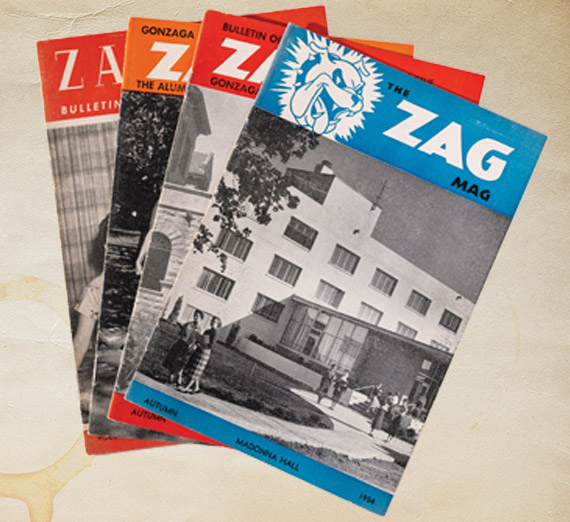
University publications provide memoires, scrapbooks, archives of moments that tell the story of this university and its people. And in some cases, they bring us back to our roots.
Gonzaga’s flagship publication has returned to its founding spot, too. Here’s a look at the way it has changed over 100+ years:

Gonzaga Magazine (1910-1936)
Edited by students with alumni in mind, serving as a source of history as there were no yearbooks or student newspapers

Zag Mag(1952-1957)
A 16-page pamphlet published by the Office of Alumni
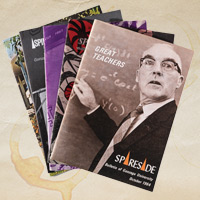
Spireside (1954-1970)
A reference to the steeples of St. Aloysius Church, with a broader audience as an 8.5x11 magazine chronicling the tremendous growth of campus infrastructure.
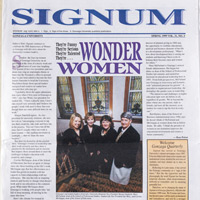
Signum (1970-1999)
Latin for “sign of the times,” this quarterly publication had a newspaper format, and in its early years included the fall class schedule.
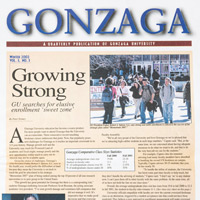
Gonzaga (2000-2005)
The name change here capitalized on the value a publication would have sitting on family coffee tables and in business reception areas.
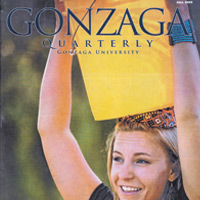
Gonzaga Quarterly (2006-2009)
A true magazine format promising to showcase the quality of a university like ours. This 10.5x14 tabloid provided broader photo and design options.
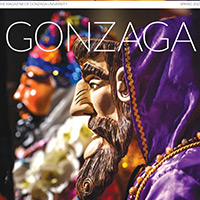
Gonzaga (2010-today)
A 9x11 magazine format features high-quality design on sustainably sourced paper, distributed to 50,000 alumni, parents, donors and friends. In 2015, the publication also began to have an online life at gonzaga.edu.
- Gonzaga Magazine (1910-1936) - edited by students with alumni in mind, serving as a source of history as there were no yearbooks or student newspapers
- Zag Mag (1952-1957) - a 16-page pamphlet published by the Office of Alumni
- Spireside (1954-1970) - a reference to the steeples of St. Aloysius Church, with a broader audience as an 8.5x11 magazine chronicling the tremendous growth of campus infrastructure.
- Signum (1970-1999) - Latin for “sign of the times,” this quarterly publication had a newspaper format, and in its early years included the fall class schedule.
- Gonzaga (2000-2005) - The name change here capitalized on the value a publication would have sitting on family coffee tables and in business reception areas.
- Gonzaga Quarterly (2006-2009) - A true magazine format promising to showcase the quality of a university like ours. This 10.5x14 tabloid provided broader photo and design options.
- Gonzaga (2010-today) - A 9x11 magazine format features high-quality design on sustainably sourced paper, distributed to 50,000 alumni, parents, donors and friends. In 2015, the publication also began to have an online life at gonzaga.edu.
Lasting Impressions
In June 1920, Ted Crosby, who edited the alumni section, published a poem, “A King,” by his brother Bing, then a high school senior.
Forty-something years later, the magazine presented a vision for what Gonzaga In Florence could become, and then 45 years later showcased the outreach of Gonzaga students to assist others when a flood ravaged four blocks of Florence not far from campus.
Spireside reported the purchase of land from Diamond National Lumber Co. on the south side of campus that would double our footprint. An IBM 1103 computer would become Gonzaga’s first entry into the technological world, and season tickets for men’s basketball in the new Kennedy Pavilion were $15 for reserved seats.
A feature in 1996 talked about “The Dilemma of Priestless Sundays,” a topic still receiving attention. Diversifying students, faculty and staff, maintaining our Jesuit mission, managing university growth and combating hate have been topics often seen on our pages.
One of my favorite stories-within-a-story was a piece on John Stockton, who shared his embarrassment as a senior at GU when students asked him for his autograph, quipping, “It’s not like I’m going to play in the NBA.”
Unchanging Priorities
One thing that all magazines before and after Spireside would include were notices of births and deaths, alumni updates and weddings, always the most-read section of any university publication.
Service to others has continued to be a major story topic, from a summer trip to Guatemala to offer relief to children there, Fr. Al Carroll’s efforts to bring Vietnamese mothers to Gonzaga and fund their educations, to manpower provided to New Orleans restoration projects following Hurricane Katrina, and a behavioral clinic in the Rosauer Center for Education to provide services for children with severely aberrant behavior. And this list goes on and on.
Our magazines have highlighted the outstanding teaching and scholarship of countless beloved professors, and nationally known guest speakers like Tip O’Neill, Cokie Roberts, Maya Angelou, Desmond Tutu, Jane Goodall, Lou Holtz and Tarana Burke and Ronan Farrow, among others.
We celebrate milestones – the University’s 100th and 125th anniversaries as well as historic moments such as Sue Weitz becoming Gonzaga’ first female vice president. We celebrate you, our readers, by offering Fr. Tony Lehmann’s uplifting “For the Spirit” column until his death in 2002, and celebrate his legacy with “To Be Continued” at the back of every issue, featuring stories of insight and inspiration.
Lasting Lessons
I leave you with a snippet from the most memorable story I’ve ever read in a Gonzaga magazine – and one which continues to have a profound impact on me. “Cannonball” was adapted from Molly Bosch (’18)’s commencement message to fellow grads (printed in fall 2018).
A nursing student, Bosch writes about an evening she spent at a local hospital, following an empathetic nurse who asked each patient how she could best tend not only to their medical complications, but also to their identities. One patient the nurse was caring for was in the last few days of his life, and since he did not speak English, she asked for an interpreter to help determine how to best care for him.
The next shift, Bosch and the nurse were not assigned to the gentleman, and because he did not speak English, none of the other nurses wanted to take his assignment. Bosch shares: “With astounding grace, my quiet nurse stood up, looked them in the eye and said, ‘He does not speak Chinese, he speaks Mandarin. His favorite foods are sorbet and apple juice, and he prefers to have his family care for him because it is culturally inappropriate for us to intervene during his last moments. Here’s my extension if you have any more questions about his identity.’ ”
As the nurse walked out the door, Bosch could think of only one question to ask, “Where did you say you went to school?” And the nurse smiled and said, “I went to Gonzaga.”
Telling stories like that is what compels us to keep publishing Gonzaga Magazine and sharing our Gonzaga stories with you. God bless you all.
The Crew
Some of our outstanding photographers: Jennifer Raudebaugh, Derek Hanson, Amy Sinisterra, Rajah Bose and Zack Berlat, to name just a few. And some of our most recent layout designers are Lou Maxon, Jerry Almanza, Pat Skattum and Tracy Martin.
Editors, those who have set the vision and concocted the story slates over the last 50 years, are:
- Jim Glynn, 1969-1977
- Lee Norton, 1977-1978
- Bill Thompson, 1978-1980
- Georgina West, 1980-1988
- Dale Goodwin, 1989-2004
- Marny Lombard, 2005-2014
- Kate Vanskike, 2015-present
